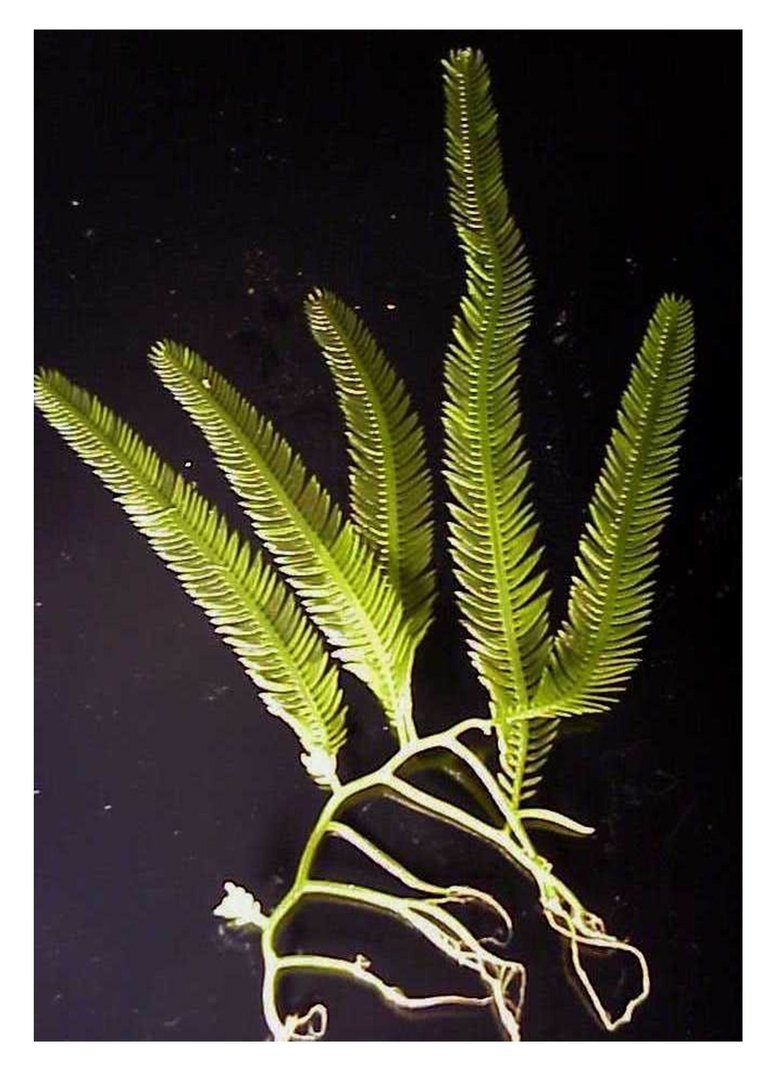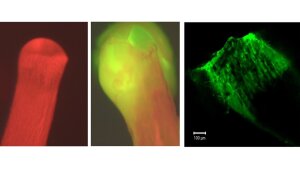Wound reaction of siphonous green macroalgae
organism
Image: The green macroalga Caulerpa taxifolia can reach several meters in length despite being a unicellular organism.Algae showing a siphonous (coenocytic) organisation usually consist of hollow bags (siphons), in which cells are lacking. In the entire macroscopic organism there are no cross walls separating nuclei, thus the whole thallus consists of a continuous mass of cytoplasm contained only by the outer walls. Siphonous algae can thus be seen as giant unicellular organisms. In contrast to multicellular organisms these algae cannot perform tissue repair after woundig but have rather to rely on elaborate cell-repair mechanisms to seal wounds before the cytoplasm extrudes. We aim to understand the underlying mechanisms of rapid biopolymer formation that mediate wound repair mechanisms in these algae.
One model organism is the invasive macroalga Caulerpa taxifolia. After its accidental introduction into the Mediterranean Sea C. taxifolia now rapidly spreads along the coastal lines. This species causes massive damage to the local flora and fauna by supplanting the local vegetation. The alga adapted very well to its new habitat. Its success is based, among others, on a very efficient reproductive strategy and a highly active chemical defence. Till most recently it was assumed that this defence is nearly exclusively based on the sesquiterpene caulerpenyne.
Proteins
Image: The pictures show how fluorescently labeled proteins are recruited into the algal wound plug.We found that caulerpenyne is efficiently transformed after tissue disruption of the alga. An esterase releases highly unstable 1,4-bis-aldehydes that can be detected using trapping reactions.
Interestingly, this conversion leads to a highly reactive molecule featuring a 1,4-dialdehyde structure. This metabolite acts as an efficient protein cross linker after wounding and is involved in the fast wound closure mechanism of the alga. We could characterize a new biopolymerisation prozess, which takes place immediately after wounding, leading to a complex copolymer of the entity of algal proteins and the excess cross linker. The function of this mechanism in the formation of the wound plug, which seals the giant cells after disruption could be proven by biochemical and chemical processes.
Rapidly after wounding the formation of a polymer wound plug is observed (left). This process can be inhibited by esterase-inhibitors, which prevent the deacetylation of caulerpenyne.
We are also beginning to understand the new role of caulerpenyne as precursor of reactive defensive compounds thus providing a bi-functional character of this molecule for the alga. Field studies on the detailed mechanism of chemical defence are underway in close collaboration with the group of Alexandre Meinesz at the University of Nice. The way how certain marine snails (Sacoglossans) can overcome the chemical defense of Caulerpa spp. is a major focus.
We also adress the generally different wound plug formation of Dascyclardus spp. and Halimeda spp. with focus on mechanistic and evolutionary aspects but also on practical applications.

